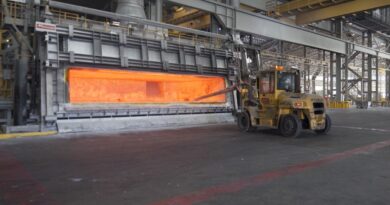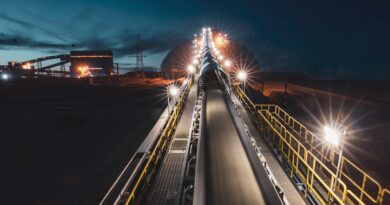Rio Tinto releases first quarter production results
Pilbara operations produced 79.3 million tonnes (100% basis) in the first quarter, 11% higher than the first quarter of 2022. Shipments were 82.5 million tonnes (100% basis), 16% higher than the corresponding period of 2022, and a first quarter record, with stronger mine production and a drawdown of stocks.
Bauxite production of 12.1 million tonnes was 11% lower than the first quarter of 2022 as our Weipa operations were affected by higher-than-average rainfall during the annual wet season. Production was further affected by equipment downtime at both Weipa and Gove. We have maintained our bauxite production guidance at 54 to 57 million tonnes as we implement plans to recover lost production at both sites through the remainder of the year.
Aluminium production of 0.8 million tonnes was 7% higher than the first quarter of 2022 as we benefited from the continued ramp-up of the Kitimat smelter. Recovery at the Boyne and Kitimat smelters is progressing to plan with full ramp-up expected to be completed later in the year. All our other smelters continued to demonstrate stable performance during the quarter.
Mined copper production of 145 thousand tonnes on a consolidated basis, was in line with the first quarter of 2022.
- Kennecott mined copper production was 36% lower than the first quarter of 2022 with lower throughput due to the combined impact of record snowfall in the period and the failure of the conveyor belt that links the mine to the concentrator in March. The concentrator is expected to operate at reduced rates until the third quarter of 2023.
- Escondida mined copper production was 6% higher than the first quarter of 2022 due to 10% higher throughput, which returned to normal levels after the corresponding quarter in 2022 included impacts from the COVID-19 pandemic and extended plant maintenance. During the quarter mined copper production was impacted compared to plan by geotechnical challenges in the open pit. Mining has been resequenced, with continued optimisation of the pit in light of the geotechnical risk.
- Oyu Tolgoi mined copper production on a 100% basis increased 41% from the first quarter of 2022 due to concentrator maintenance in the prior period and higher copper head grades (0.49% vs. 0.40%). First sustainable underground production was achieved during the period with 0.7 million tonnes of ore milled from the underground mine at an average copper head grade of 1.36%, and 9.6 million tonnes from the open pit with an average grade of 0.43%.
Mined copper guidance for 2023 has been lowered to 590 to 640 thousand tonnes (previously 650 to 710 thousand tonnes) primarily reflecting the impact of the conveyor outage at Kennecott, together with the geotechnical challenges in the open pit at Escondida.
Titanium dioxide slag production of 285 thousand tonnes was 4% higher than the first quarter of 2022, due to continued improved performance at Rio Tinto Iron and Titanium Quebec Operations, Canada and Richards Bay Minerals, South Africa.
IOC production was 5% higher than the first quarter of 2022, and in line with the prior quarter, with weather related issues impacting operations during the period. Shipments were 6% higher than the first quarter of 2022, and 4% lower than the prior quarter, following loading restrictions at the rail and port.
At its Rincon lithium project in Argentina, its $140 million estimate and schedule to develop the starter plant is under review in response to significant local inflation and cost escalation for equipment.
On 16 February, Rio Tinto re-financed the $3.9 billion Oyu Tolgoi project finance facility with a syndicate of international financial institutions, export credit agencies and commercial lenders. The lenders have agreed to a deferral of the principal repayments by three years to June 2026 and an extension of the final maturity date by five years from 2030 to 2035.




